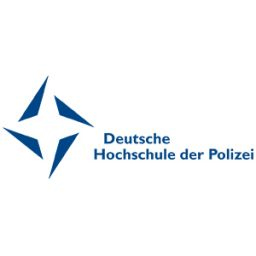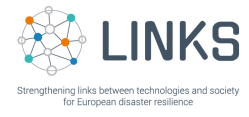
Annika Hamachers, DEUTSCHE HOCHSCHULE DER POLIZEI; Mick Claessens, VEILIGHEIDSREGIO ZUID-LIMBURG; Judy Veld-Op-Het, SITECH SERVICES OF CHEMELOT; Jan Starmans, SITECH SERVICES OF CHEMELOT
LINKS brings together practitioners from different countries who are actively involved in the cases. Their role in the project is key to:
- Ensure the gaps, challenges and needs experienced in their daily operations are captured in the cases;
- Validate the practical value of the main outputs (such as the LINKS Framework and the LCC) in their work:
- Be contributing members of the LINKS Community.
In this issue, the German Police University, the Security Region South Limburg and Chemelot/Sitech in the Netherlands describe their role in LINKS and important on-going activities.

The German Police University (Deutsche Hochschule der Polizei, DHPol) was established in 2006 and is supported by the interior ministries and interior senators of the federal states and the federal government of Germany. Since October 2007 this quite unique place for higher education offers the two-year Master’s programme “Public Administration – Police Management” for German law enforcement officers, particularly for those intending to enter the leadership or management level. The curriculum covers very diverse subjects – from operations management and business administration over criminology, jurisprudence, and traffic science to psychology and communication science. Besides teaching the currently almost 400 enrolled police officers, DHPol is also actively involved in national and international research endeavors – such as the project LINKS.
ROLE IN LINKS
DHPol’s Department II.5 for Communication Science was particularly excited to become a research partner in LINKS because the identification of good practices in relation to crisis communication is one of the main research and teaching topic.
In the context of the project, they are responsible for carrying out the terrorism case. Bringing together law enforcement authorities with their different stakeholders in a terrorism disaster, thus, gives DHPol the opportunity to assess the potentials, limitations, and current good practices of the uses of SMCS in police crisis communication during an attack and beyond.
To set the groundwork for the terrorism case with the German police and their stakeholders (which is scheduled for the end of this year), DHPol has been working on two key activities: an in-depth case analysis and a survey. The analysis provides a detailed description of the infrastructure of the German Police and its counter-terrorism units at the national, state, and local level. Additionally, it evaluates four recent terrorist attacks in Germany with regard to potential applications of SMCS. Those aspects may guide the future assessment of the terrorism case in the context of LINKS. Lastly, it identifies crucial actors or groups that were affected by or involved in those four incidents and that could serve as interesting research partners for the LINKS Framework evaluation and future members of the LINKS Community.
Additionally, DHPol issued a survey to all 16 German federate states and the state riot police evaluating which law enforcement organizations already employ SMCS technologies in their risk and crisis communication (during terrorist attacks), if they have any guidelines on the uses of SMCS and who is in charge of making decisions on SMCS strategies. The results are currently being analysed.


Veiligheidsregio Zuid-Limburg is one of the twenty-five Security Regions within the Netherlands. It consists of sixteen municipalities, including bigger municipalities such as Maastricht. VRZL is a public organization where local governments join forces with police, fire squads and medical aid to act effectively in large-scale emergency situations. The Security Region’s main task is to act as effectively and fast as possible when faced with an emergency situation in the region of Zuid-Limburg.
The Security Region protects the safety of everyone living, working in, or visiting the region. Its main tasks are to prevent, fight and restore disaster situations with great threats to the health and safety of a large number of people or material damage, such as fire, extreme weather and flooding, terrorism and epidemics (such as coronavirus). They train our organization to cope effectively with crises, for example by organizing large-scale exercises in fake crisis situations.
One of the most important safety risks in the region comes from Chemelot’s petrochemical site. The total chemical industrial area Chemelot comprises 880 hectares of land and it is one of the top 5 chemical clusters in the Netherlands. The chemical industrial complex houses 60 factories, including a number of factories that deal with toxic substances. As an industrial park, Chemelot is aware of the responsibility for safe and healthy working conditions for all the employees, contractors and the environment as a whole: this is why the production processes are designed in a way to minimize safety risks.
Chemelot has its own emergency response organisation and regular exercises are held on site. If an incident occurs, Chemelot’s fire brigade is responsible for handling the on-site consequences, whereas Veiligheidsregio Zuid-Limburg is responsible for the off-site consequences. The latter entails alerting people surrounding the Chemelot site about the potential risks and danger. Hence the cooperation between the two organisations is key.
Role in LINKS
VRZL and Chemelot/ST are responsible for carrying out the industrial hazard case with a specific focus on improving risk and crisis communication with respect to situations related to Chemelot. In collaboration with the Dutch RIVM (National Institute for Public Health and Environment), they recently conducted a large study, investigating how people who live around Chemelot experience their safety. Moreover, their informational needs were investigated.
The findings will both improve risk communication and will serve as an input for the LINKS case. Through the project, VRZL and Chemelot aim to build further upon those endeavors in risk communication, while simultaneously finding ways to improve crisis communication through clever use of online technologies, such as SMCS.

